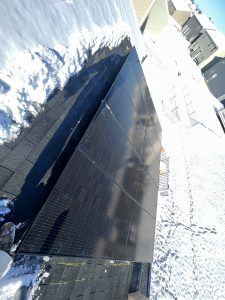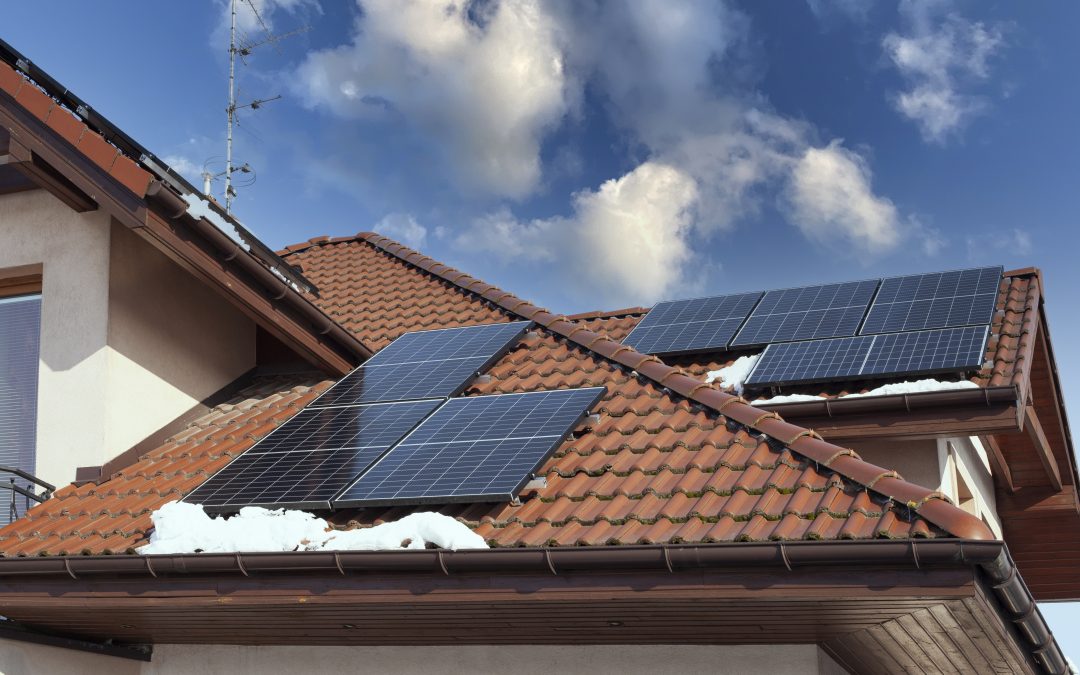In the realm of renewable energy, solar power stands as a beacon of hope, promising a cleaner, more sustainable future. While its benefits are widely celebrated, there’s a lesser-known advantage that emerges when the mercury drops: solar panels actually operate more efficiently in colder temperatures. Contrary to popular belief, chilly weather can actually enhance the performance of solar panels, offering a compelling case for embracing solar energy in colder climates. Let’s delve into the science behind this intriguing phenomenon.
Understanding the Effect of Temperature on Solar Panels

Solar Installation Photo (Renewable Energy Corporation)
To appreciate why solar panels thrive in colder conditions, it’s essential to grasp the relationship between temperature and photovoltaic (PV) cells. Solar panels function by converting sunlight into electricity through the photovoltaic effect, wherein photons from sunlight knock electrons loose from atoms, generating a flow of electricity. However, the efficiency of this process can be influenced by ambient temperature.
The Conundrum of Temperature Coefficients
Temperature coefficients play a pivotal role in determining how solar panels perform in varying weather conditions. These coefficients quantify how much a panel’s efficiency decreases as temperatures rise. Typically, solar panels experience a decrease in efficiency as temperatures climb. This inverse relationship between temperature and efficiency has been a common misconception, leading many to believe that solar panels fare poorly in colder climates.
Unveiling the Cold Weather Advantage
Recent studies have challenged this conventional wisdom, revealing that solar panels can actually perform better in colder temperatures. The enhanced conductivity facilitates the movement of electrons, leading to a more efficient conversion of sunlight into electricity. Furthermore, colder temperatures mitigate resistive losses within the solar panel’s electrical components, allowing for a more efficient flow of current. This phenomenon is particularly pronounced in crystalline silicon solar panels, the most prevalent type in the market.
Real-World Evidence
Research conducted by leading institutions and industry experts corroborates these findings. A study published in the journal ‘Solar Energy’ observed a 12% increase in solar panel efficiency during cold, sunny days compared to hot, summer days. Similarly, the National Renewable Energy Laboratory (NREL) reported that solar panels in cold, northern regions can produce up to 25% more electricity per day than those in warmer climates.
Harnessing the Cold Weather Advantage
The revelation that solar panels excel in colder temperatures underscores the versatility and resilience of solar energy. For regions accustomed to frigid winters, this presents an opportunity to maximize energy production during the seasons when electricity demand is typically high. Additionally, advancements in solar technology, such as anti-reflective coatings and bifacial panels, further amplify the cold weather advantage, ensuring optimal performance even in sub-zero temperatures.
Conclusion
As we strive to transition towards a sustainable energy landscape, the realization that solar panels thrive in colder temperatures offers a refreshing perspective. Far from being hindered by frosty conditions, solar energy emerges as a strong solution capable of flourishing in diverse climates. Armed with this knowledge, homeowners and businesses can embrace solar power with confidence, knowing that even the chilliest of days can yield abundant energy from the sun.
Are you interested in joining the shift to renewable energy?
While there are logistical issues in making the change, we can solve them all for you, easily and economically. Contact Us at Renewable Energy and we’ll show this can be done to your advantage.


Recent Comments